Discover Tokyo // A Beginners Guide to Tokyo (Food, Transport + More)
Discover Tokyo || Where to Go, What to Eat & How to Get Around
Planning your trip to Tokyo (東京) but not sure what to visit?
No problem, this article will give you several ideas of things to do and places to visit in Tokyo.
We also added a section on the history of this beautiful city for those who want to know a little more.
With its high-end boutiques, offbeat fashion, Michelin-starred restaurants, hidden cafes, modern skyscrapers and small shrines, the city is a place of contrasts.
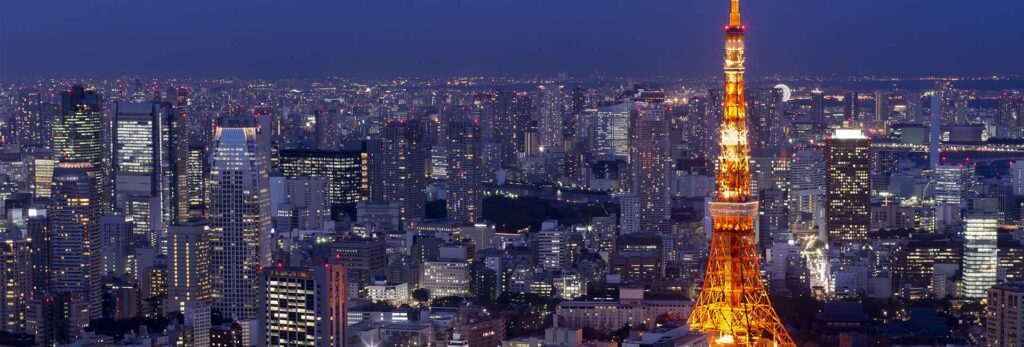
Let’s go and discover the centre of this amazing city that is Tokyo!
Don’t hesitate to go to the section that interests you the most👇.
Discover Tokyo || Short History of Tokyo
Discover Tokyo || Things To Do in Tokyo
Discover Tokyo || Top 3 Best Places To Visit
Discover Tokyo || Where to Eat?
Discover Tokyo || How to Get Around Tokyo?
Discover Tokyo || FAQs
BONUS // Check out Flexi Classes, our online teaching platform where you can study Japanese 24/7 by choosing when, what and with whom to study.
WANT TO STUDY IN JAPAN? We now offer Japanese Courses in Tokyo, and offer both individual and group classes.

Tokyo || A Brief History
Before we talk more about the city itself, here is a brief history of Japan’s capital city, Tokyo.
The Beginning

Originally, Tokyo was a small fishing village called Edo.
During the Edo period, the city grew to become one of the most populous cities in the world by the end of the 18th century, with a population of nearly one million.
In 1542, the first Westerners, Spanish and Portuguese merchants and missionaries, arrived in Japan. The Japanese discovered the Christian religion and firearms.
The real founding act of Tokyo can be dated to 1590, when Ieyasu, the first Tokugawa shogun, built a fortress to establish his power.
Earthquakes followed by large fires also mark this period in Tokyo’s history.
In 1868, the transformation of the country began and Edo became the capital of the unified Meiji Empire.
The emperor moved into Edo Fortress, which became the Imperial Palace of Japan.
The name of the city of Edo was changed to Tokyo, which means “capital of the East”.
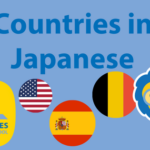
27 Country Names in Japanese 🌍 Your Complete Guide
Countries in Japanese – Interested in learning some country names in Japanese? Some actually translate and sound very similar to English, come and see!
Tokyo in the 20th Century
In 1923, the great Kanto earthquake destroyed almost half the city. The reconstruction of Tokyo was very costly and took seven years, based on the model of a Western city.
During the Second World War, the American air force reduced Tokyo to rubble, causing over 80,000 deaths.
After the war, on 2 September 1945, Tokyo was occupied and governed by Allied forces until April 1952.

With the help of the United States, the post-war reconstruction of the city was spectacular: the 1950s and 1960s have been called the “Japanese miracle”.
In 1964, Tokyo hosted the Olympic Games. During this period of uninterrupted growth, Tokyo incorporated new districts and expanded as far as the sea.
In the 1980s, as Japan became the world’s second largest economy, Tokyo also became one of the wealthiest cities.
Today, Tokyo continues to transform itself, to change its face… Construction, reconstruction, but at a more reasonable pace.
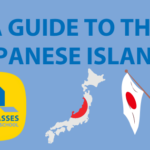
A Guide to the Japanese Islands // Including Some Hidden Gems
Fun Fact to get us started, Japan is made up of 6,852 islands! Today we cover the main Japanese islands and everything they have to offer.
Discover Tokyo || What To Do
Walking in a Park
Discovering Japan and Japanese culture most certainly must involve visiting the capital’s parks and gardens.
Indeed, Tokyo’s green spaces are immense and numerous, which will allow you to take a green break during your trip to Tokyo by discovering Japanese-style gardens!
DID YOU KNOW || In Japan, national parks have been classified by the Ministry of the Environment since 1934.
They are regulated by law with the aim of protecting nature and landscapes to pass on to future generations.
FUN FACT || Today, there are 34 national parks in Japan.

Here are some of the parks where you can go for a walk:
- Koishikawa Kōraku-en 小石川後楽園
- Imperial Palace East Gardens 皇居東御苑 (Kōkyo Higashi Gyoen)
- Shinjuku Gyoen 新宿御苑,
- Yoyogi-kōen 代々木公園
Visit the Ghibli Museum
If you are interested in Japanese culture and its film culture, you have probably already watched a Ghibli animation film.
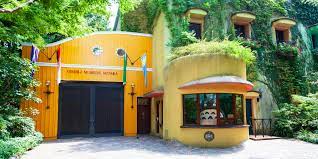
The Ghibli Art Museum is dedicated to the eponymous Japanese animation studio, located in the western suburbs of Tokyo.
The museum has been open since 2001 and features behind-the-scenes footage of the studio’s famous creations, such as Spirited Away and My Neighbour Totoro.
After a short queue, you are given the entrance ticket and an official “Ghibli Museum” brochure translated into several languages, as well as a small piece of film from one of the studio’s movies.
IMPORTANT || The tour is entirely in Japanese, and photos are not allowed inside the building.
Rooms of different sizes follow each other to let visitors discover the indescribable charm inspired by the Ghibli universe.
Here is a short video to show you some images of the museum’s interior.
WARNING || It is mandatory to book your tickets (very far) in advance!

Places in Japanese // 100+ Common & Useful Words (Beginner)
We teach you common but useful words about places in Japanese. Hospital, school, bank.. We cover them all. Your vocabulary skills will be greatly enhanced.
Check Out The Arcades
Japanese arcades are one of the symbols of the country and a must-see experience for any video game enthusiast travelling in Japan.
To be honest, even if video games aren’t your bag you still have to check these out for the sheer madness of it all!
It is impossible to miss them as they are part of the scenery and often occupy large spaces. However, there are fewer and fewer arcades since the arrival of consoles.

Previously, entering an arcade meant discovering titles that were not available elsewhere, either in terms of graphics or gameplay and therefore the experience offered.
Although some games are still much more enjoyable to play indoors as they benefit from facilities that place the player in a real-life situation.
Arcades in Tokyo are a great place to be for video game enthusiasts, or for people who want to have a good time with friends.
Anyway, take advantage of your next trip to Japan to enter this unique universe and spend the few 100 yen coins you have in your pockets!
LOOK OUT || If you get a chance, see if you can spot a Japanese work (known as サラリーマン salary men) taking a break from the rigours of daily work by going wild on the dance mats!
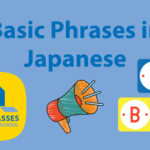
Basic Phrases in Japanese // Learn 32 Essential Phrases (With Flashcards & FREE Quiz)
Basic Phrases in Japanese // Learn these phrases to make your first steps when learning Japanese. We teach you how to get by when speaking basic Japanese.
Discover Tokyo || 3 Best Places To Visit
Shibuya
It is impossible to visit Tokyo without discovering the chaos of Shibuya (渋谷区, Shibuya-ku) at least once.
You probably already know this district.
It is home to one of the busiest crossroads in the world, nicknamed the Hachiko passage.
What a sight to see the crowds crossing each other in continuous lines!
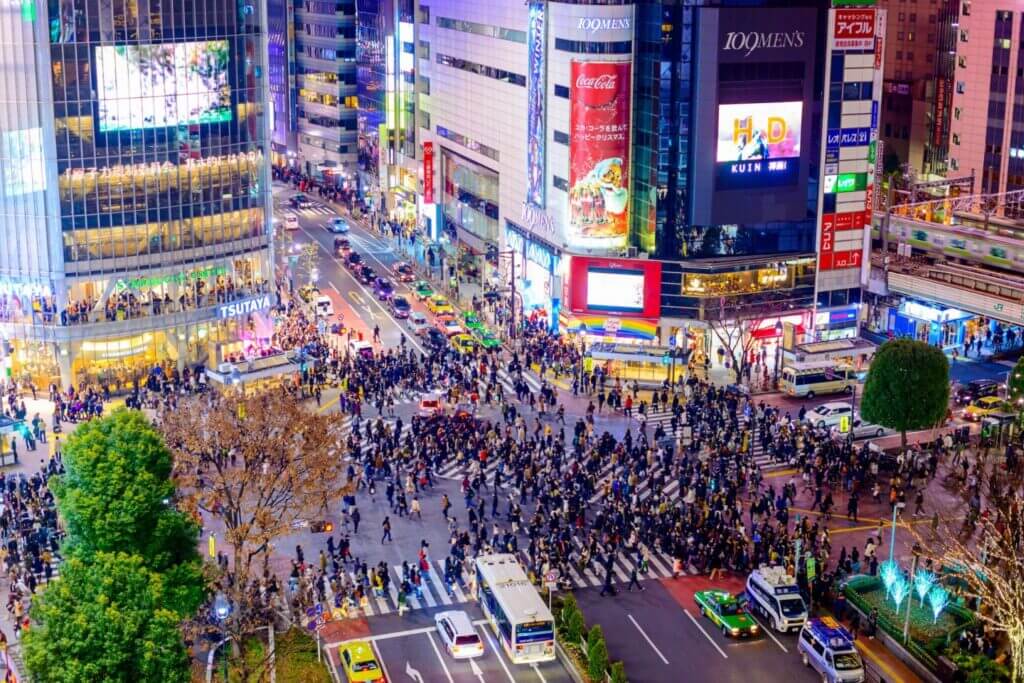
Shibuya is one of the trendiest areas in Tokyo.
It’s huge shopping malls and countless fashion boutiques make Shibuya the most fashionable district in the city, competing with Harajuku.
The most famous mall in Shibuya is Shibuya 109, a large monument dedicated exclusively to women shoppers.

If you exit Shibuya station at the “Hachiko” exit, you will arrive at the square where the statue of Hachiko.
Hachiko is widely know as Japan’s most loyal dog.
This adorable Akita Inu is said to have waited for his master at this exact station every day, despite the sad passing of his owner.
The story left many locals weeping and thus a statue was built in his honour.
Tokyo SkyTree
The Tokyo SkyTree (東京スカイツリー, Tōkyō Sukaitsurī) is a Japanese digital broadcasting tower, inaugurated in 2012 in the Sumida district, north-east of the capital.
It is one of the tallest in the world, with a peak of 634 metres and contains 2 observatories and a shopping mall.

For a bird’s eye view of the capital, tickets can be purchased to access the Skytree’s observation platforms.
It is the world’s tallest broadcasting tower and the second tallest structure in the world.
It allows digital television and radio broadcasts over a greater range than the Tokyo tower.
BE AWARE || The tower is indeed very popular and visitors flock by the thousands every day, so there is a long wait to get into the tower.
Senso-ji Temple
Senso-ji (金龍山浅草寺, Kinryū-zan Sensō-ji) is the oldest Buddhist temple in Tokyo, located in the Asakusa district on the banks of the Sumida River.
DID YOU KNOW || The temple dates back to 645 CE.
Senso-ji Temple in Asakusa is dedicated to the Buddhist goddess Kannon.
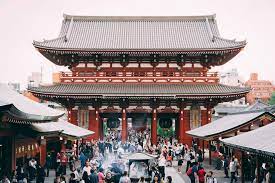
Kannon, a boddhisattva, is very popular in Japan as she embodies compassion.
The Senso-ji itself is imposing as it is built in the centre of a Buddhist complex that encompasses entire streets of the Asakusa district.
It is now one of the capital’s favourite tourist spots for its flamboyant colours and popular shopping atmosphere.
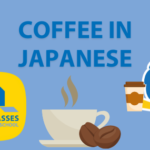
Coffee in Japanese // A Complete Guide to Ordering WITH Audio
Once you learn the names of the various types of coffee in Japanese, ordering a cup won’t be too much trouble. Check out structures and examples.
Where to Eat?
The Japanese love to eat and you can feel it at every corner!
Tokyo is a city full of restaurants, each one more delicious than the next. You will even find delicious and very cheap street food stalls.
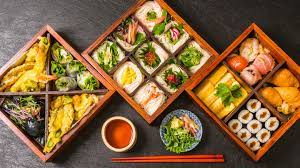
From high-end sushi restaurants to ramen, from Michelin-starred restaurants to yakiniku restaurants.
If you like Ramen (who doesn’t) then you simply have to visit Tokyo Ramen Street.
This is a one-stop noodle spot for all Ramen lovers and incredibly it is located underground, in Tokyo station.
TOP TIP || You can’t go wrong anywhere down Tokyo Ramen Street, but try the Tsukemen if you can. This is a type of Ramen where the broth is separated from the noodle dish itself. Grab some noodles with your chopsticks, dip it in the broth and trust us when we say you’ll have had nothing like it before!
If Teppanyaki is more your thing head over to Teppan Baby.
Located in Kabuchiko district, the star of the show actually here is the Okonomiyaki dish.
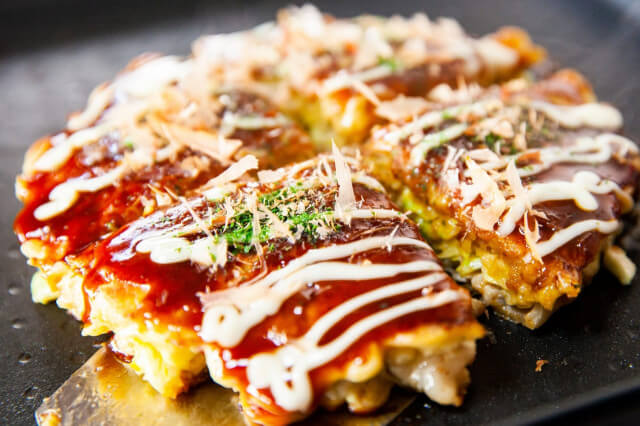
TOP TIP || If you can, try and get a seat next to the chefs. You’ll have all your dishes cooked before your very eyes and, even if you speak no Japanese, you’ll have a lot of fun with some of the friendliest chefs you’ll ever meet.
We could honestly go on and on and on.. fact is, you’ll find good food in Tokyo or anywhere in Japan!
FANCY SAVING SOME CASH? The 24-hour shops also offer a wide variety of pre-cooked food and the option to cook or reheat some of the dishes prepared on site.
Eating in Tokyo is surprisingly cheap. At most food trucks, you’ll find hearty dishes starting at ¥600.
In addition to the low price of food, all restaurants serve free water and tea.

Traditional Japanese Food // 10 Of The Very Best (You Have To Try)
Traditional Japanese food is some of the best food this planet has to offer but it’s not all about Sushi. We discover some gems and must eat things in Japan
Discover Tokyo || How to Get Around the City?
If there is one city where public transport is more comfortable and faster than private transport, it is Tokyo.
Here are the most common ways to get around Tokyo.
Subway
The Tokyo underground is one of the fastest ways to get around the city and its surroundings.
The punctuality and frequency of the trains are a model for the rest of the world.
The Tokyo underground is quite large, clean and reliable.
The map also gives you immediate headaches! Don’t worry though, you’ll get used to it.

Fares vary according to the distance travelled. Here are some examples:
1 to 6 kilometres: ¥170 (€1.20)
12 to 19 kilometres: ¥240 (€1.70)
28 to 40 kilometres: ¥310 (€2.20)
Tokyo underground day ticket: ¥600 (€4.20)
IMPORTANT || The Tokyo underground system currently has 13 lines. It carries over 8 million passengers per day.
TOP TIP || If you plan to travel many areas of Japan it’ll be worth investing in a JR Rail Pass which is a one-off ticket that covers nearly all of your train journeys. It’ll save you a fair portion of money.
Yamanote Line
The Yamanote Line is probably the most popular and convenient way to get around Tokyo.
It is the most important railway line in Tokyo. It takes about an hour to complete a full circle of the city (35 kilometres).

It is the only line that connects all major Tokyo stations, such as Shibuya, Shinjuku, Ikebukuro, Ueno and Tokyo Station.
As with the underground, the price of a trip on the Yamanote line varies according to the distance of the trips.
The average fare is ¥160 (€1.10).
Bus
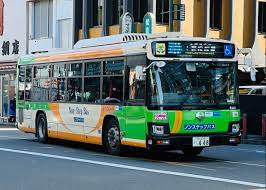
In Tokyo, buses are a good alternative to underground lines.
The main advantage is that they allow you to see outside and go straight through the city streets. It’s a great way to see the sights on the way.
The downside is that the last buses run at 10pm, unlike the other transport services which are open later.
The price of a single ticket is 210 yen. Children under 12 years old pay 50% of the price and children under one year old travel free.
Unlike the rest of the world, Japanese buses are paid for at the end of the journey.
If you don’t have a travel card, you will have to insert coins or a thousand yen note into the corresponding machine, which will give you change.
However, unlike the underground and the Yamanote line, travelling by bus in Tokyo is not the best option.
The system is more complicated and slower than other means of transport.

27 Country Names in Japanese 🌍 Your Complete Guide
Countries in Japanese – Interested in learning some country names in Japanese? Some actually translate and sound very similar to English, come and see!
There we have it, want to discover Tokyo? That’s your beginners guide to doing just that.
Tokyo is truly one of the greatest cities in the world and having been ourselves, we know you’ll love it.
There is something for everyone – and don’t forget, you can come and study Japanese in Tokyo whilst living with a Japanese family at LTL right away.
ありがとうございます
FREQUENTLY ASKED QUESTIONS
How to write Tokyo in Japanese?
Tokyo in Japanese is written 東京 (Tōkyō).
Do I need a JR Rail Pass in Tokyo?
If you plan to travel many areas of Japan it’ll be worth investing in a JR Rail Pass which is a one-off ticket that covers nearly all of your train journeys. It’ll save you a fair portion of money.
If you are just in Tokyo, you will not need a JR.
How much does the Tokyo underground cost to use?
Fares vary according to the distance travelled. Here are some examples:
1 to 6 kilometres: ¥170 (€1.20)
12 to 19 kilometres: ¥240 (€1.70)
28 to 40 kilometres: ¥310 (€2.20)
Tokyo underground day ticket: ¥600 (€4.20)
Where to eat in Tokyo?
The Japanese love to eat and you can feel it at every corner!
Tokyo is a city full of restaurants, each one more delicious than the next. You will even find delicious and very cheap street food stalls.
From high-end sushi restaurants to ramen, from Michelin-starred restaurants to yakiniku restaurants…Here’s a quick overview of everything you need to try on your trip to Tokyo!
The 24-hour shops also offer a wide variety of pre-cooked food and the option to cook or reheat some of the dishes prepared on site.
Eating in Tokyo is surprisingly cheap. At most food trucks, you’ll find hearty dishes starting at ¥600.
In addition to the low price of food, all restaurants serve free water and tea.
What dishes should I order in Tokyo?
If you like Ramen (who doesn’t) then you simply have to visit Tokyo Ramen Street.
This is a one-stop noodle spot for all Ramen lovers and incredibly it is located underground, in Tokyo station.
TOP TIP || You can’t go wrong anywhere down Tokyo Ramen Street, but try the Tsukemen if you can. This is a type of Ramen where the broth is separated from the noodle dish itself. Grab some noodles with your chopsticks, dip it in the broth and trust us when we say you’ll have had nothing like it before!
If Teppanyaki is more your thing head over to Teppan Baby.
Located in Kabuchiko district, the star of the show actually here is the Okonomiyaki dish.
What is the currency used in Japan?
The official currency of Japan is the Yen ¥.
Here are some rough conversions that you might find useful (as of January 2023).
— €10 = ¥ 1,395
— $10 = ¥ 1,306
— £10 = ¥ 1,575
What is the population of Tokyo?
In 2022, the current population of Tokyo is 14,264,798.
Want More From LTL?
WANT TO LEARN JAPANESE? Check out our online Japanese courses here.
We offer a 7-day free trial to all new students where you can study 24/7.
What about studying Japanese in Japan instead? We’ve got your back. Our Japanese courses in Tokyo can either be taken in small groups of no more than 5 students or individually for a more tailored experience.
We even offer incredible homestay experiences in Tokyo as well.
Come and be a part of this amazing community.








